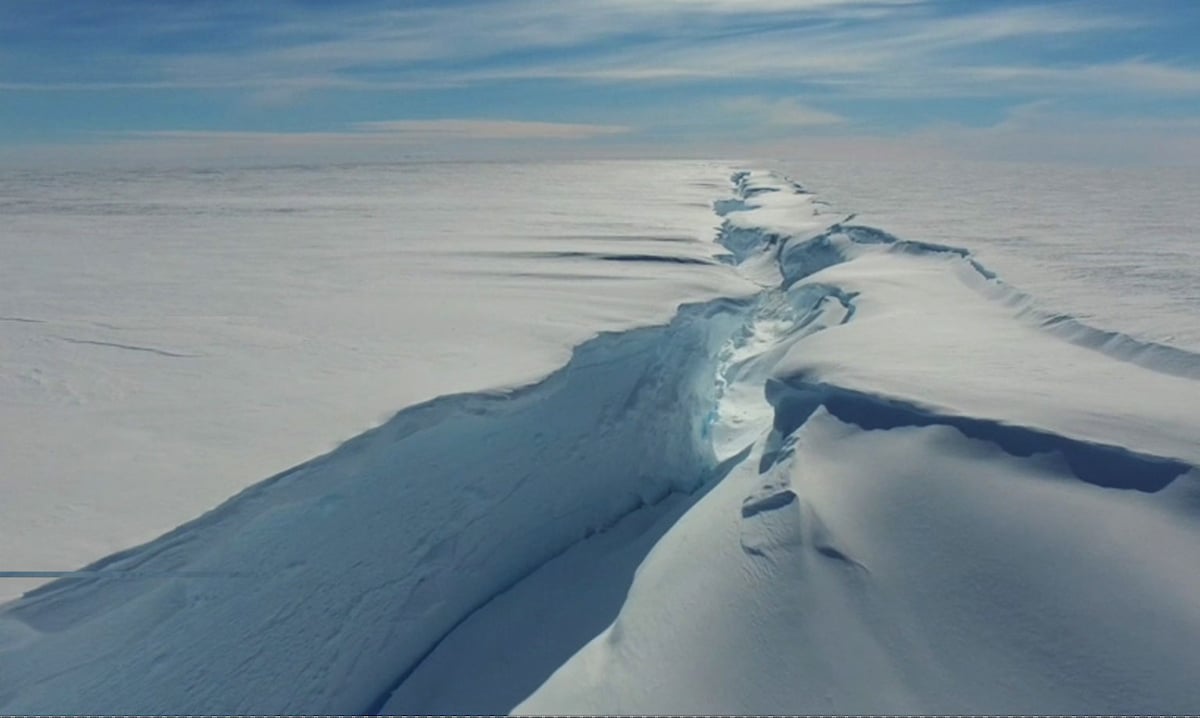Iceberg Nearly the Size of London Breaks Away From Antarctica

 Why you can trust us
Why you can trust us
Founded in 2005 as an Ohio-based environmental newspaper, EcoWatch is a digital platform dedicated to publishing quality, science-based content on environmental issues, causes, and solutions.
A gigantic iceberg nearly the size of Greater London has broken free from the 492-foot-thick Brunt Ice Shelf in Antarctica. Cracks that had been developing naturally in the ice shelf over the past few years had expanded across the entire shelf, causing the iceberg to finally calve on Sunday, according to a British Antarctic Survey (BAS) press release.
A crack known as Chasm-1 had extended all the way through the ice shelf when the iceberg split off. The event happened ten years after the expansion of vast cracks were first discovered by BAS scientists. It was the second major calving event from the same area in the past two years.
The mammoth iceberg broke free close to Britain’s Halley Research Station, BBC News reported. The 21 staff members operating the research station are not in danger and will continue maintaining the base until they are picked up by aircraft around February 6.
Due to the complicated structure of the Brunt Ice Shelf, the effect calving events will have is difficult to anticipate, so the station is only staffed from November to March, during the Antarctic summer, the press release said.
“Our glaciologists and operations teams have been anticipating this event. Measurements of the ice shelf are carried out multiple times a day using an automated network of high-precision GPS instruments that surround the station. These measure how the ice shelf is deforming and moving, and are compared to satellite images from ESA, NASA and the German satellite TerraSAR-X. All data are sent back to Cambridge for analysis, so we know what is happening even in the Antarctic winter – when there are no staff on the station, it is dark for 24 hours and the temperature falls below minus 50 degrees C (or -58F),” director of BAS professor Dame Jane Francis said in the press release.
An iceberg slightly smaller than the new one, known as A74, broke free from the Brunt Ice Shelf in February of 2021 and went adrift into the Weddell Sea, reported The Independent. It is likely that the new iceberg — which will be named by the U.S. National Ice Center — will follow a similar path.
The floating Brunt Ice Shelf calves icebergs on a regular basis as it flows toward the sea at a rate of up to 1.24 miles per year, the press release said. The evolution of the Brunt Ice Shelf is a natural process and not the same as that of the Larsen C Ice Shelf, which has seen major calving events due to considerable surface meltwater. “This calving event has been expected and is part of the natural behaviour of the Brunt Ice Shelf. It is not linked to climate change. Our science and operational teams continue to monitor the ice shelf in real-time to ensure it is safe, and to maintain the delivery of the science we undertake at Halley,” added BAS glaciologist professor Dominic Hodgson in the press release.
Subscribe to get exclusive updates in our daily newsletter!
By signing up, you agree to the Terms of Use and Privacy Policy & to receive electronic communications from EcoWatch Media Group, which may include marketing promotions, advertisements and sponsored content.

 233k
233k  41k
41k  Subscribe
Subscribe 




